
History of Wayang Kulit
 Wayang is a generic term denoting traditional theatre in Indonesia. There is no evidence that wayang existed before Hinduism came to Southeast Asia sometime in the first century CE. However, there very well may have been indigenous storytelling traditions that had a profound impact on the development of the traditional puppet theatre. The first record of a wayang performance is from an inscription dated 930 CE which says "si Galigi mawayang," or "Sir Galigi played wayang". From that time till today it seems certain features of traditional puppet theatre have remained. Galigi was an itinerant performer who was requested to perform for a special royal occasion. At that event he performed a story about the hero Bhima from the Mahabharata.
Wayang is a generic term denoting traditional theatre in Indonesia. There is no evidence that wayang existed before Hinduism came to Southeast Asia sometime in the first century CE. However, there very well may have been indigenous storytelling traditions that had a profound impact on the development of the traditional puppet theatre. The first record of a wayang performance is from an inscription dated 930 CE which says "si Galigi mawayang," or "Sir Galigi played wayang". From that time till today it seems certain features of traditional puppet theatre have remained. Galigi was an itinerant performer who was requested to perform for a special royal occasion. At that event he performed a story about the hero Bhima from the Mahabharata.Hinduism arrived in Indonesia from India even before the Christian era, and was slowly adopted as the local belief system. Sanskrit became the literary and court language of Java and later of Bali. The Hindus changed the Wayang (as did the Muslims, later) to spread their religion, mostly by stories from the Mahabharata or the Ramayana. Later this mixture of religion and wayang play was praised as harmony between Hinduism and traditional Indonesian culture. On Java, the western part of Sumatra and some smaller islands traditionalists continued to play the old stories for some time, but the influence of Hinduism prevailed and the traditional stories either fell into oblivion or were integrated into the Hinduistic plays.
The figures of the wayang are also present in the paintings of that time, for example, the roof murals of the courtroom in Klungkung, Bali. They are still present in traditional Balinese painting today.
When Islam began spreading in Indonesia, the display of God or gods in human form was prohibited, and thus this style of painting and shadow play was suppressed. King Raden Patah of Demak, Java, wanted to see the wayang in its traditional form, but failed to obtain permission from the Muslim religious leaders. As an alternative, the religious leaders converted the wayang golek into wayang purwa made from leather, and displayed only the shadow instead of the figures itself. Instead of the forbidden figures only their shadow picture was displayed, the birth of the wayang kulit.
The figures are painted, flat woodcarvings (a maximum of 5 to 15 mm thick -- barely half an inch) with movable arms. The head is solidly attached to the body. Wayang klitik can be used to perform puppet plays either during the day or at night. This type of wayang is relatively rare.
Wayang today is both the most ancient and most popular form of puppet theatre in the world. Hundreds of people will stay up all night long to watch the superstar performers, dalang, who command extravagant fees and are international celebrities. Some of the most famous dalang in recent history are Ki Nartosabdho, Ki Anom Suroto, Ki Asep Sunarya, Ki Sugino, and Ki Manteb Sudarsono. (source)

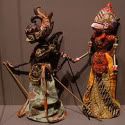


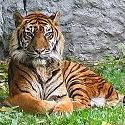
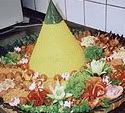
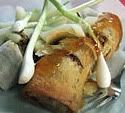
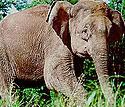











0 comments:
Post a Comment